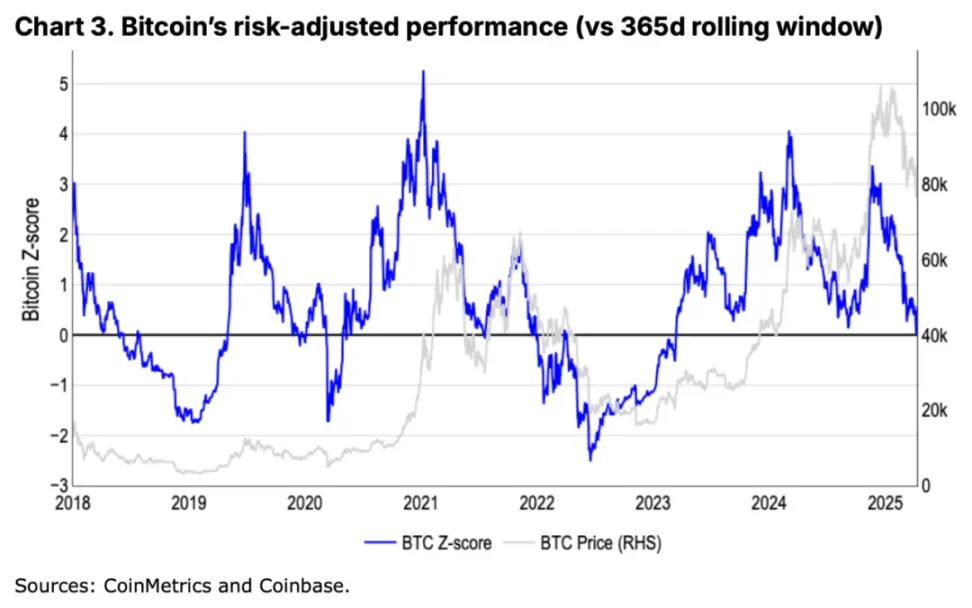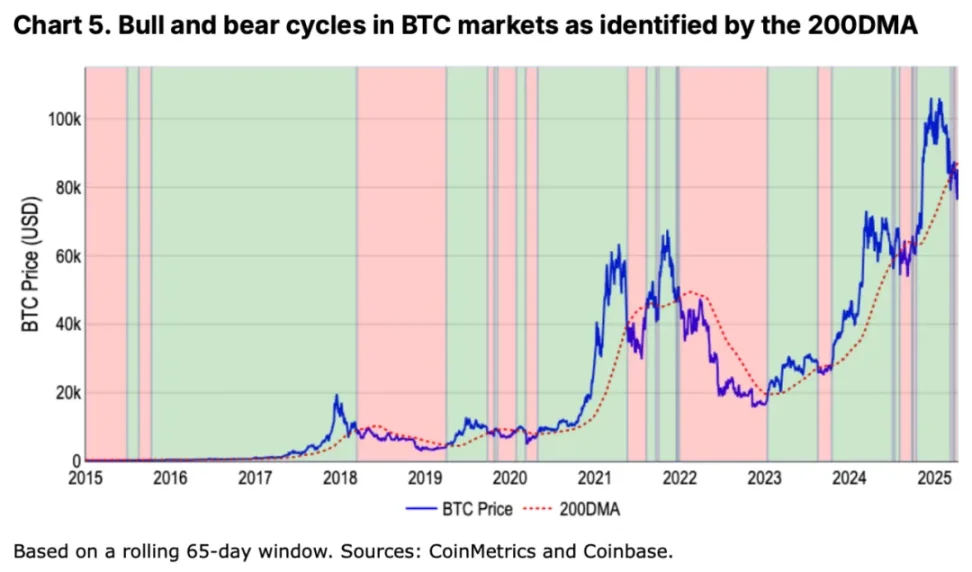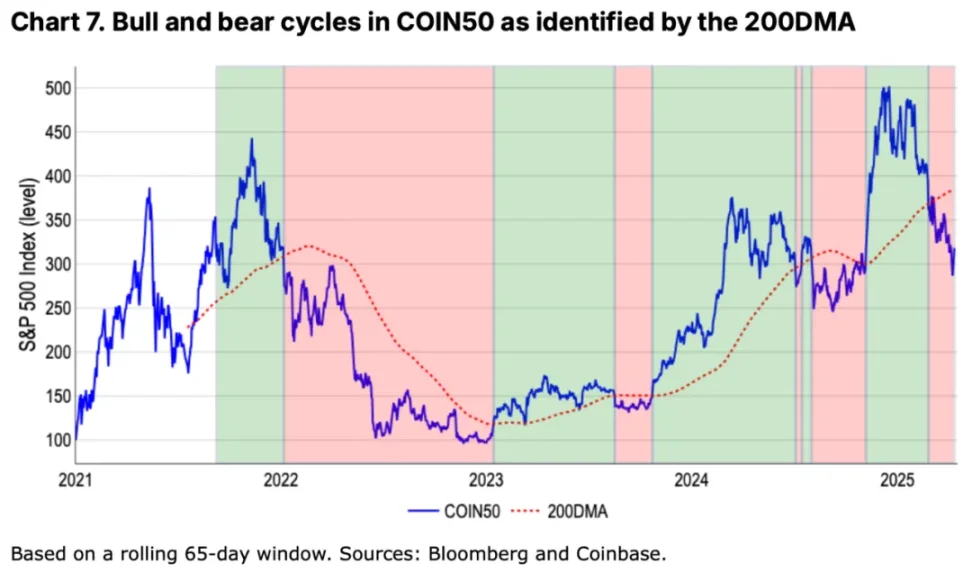Coinbase Research Institute released a bearish report. In this report, the Coinbase research team conducted an in-depth analysis of whether the cryptocurrency market has entered a bear market. The original report link is in the internal reference. Here, we will discuss some of the report's perspectives.
The report points out that Bitcoin and the COIN50 index have recently fallen below the 200-day moving average, a technical indicator typically viewed as a signal of a long-term trend change. Meanwhile, the total market capitalization of cryptocurrencies excluding Bitcoin has dropped 41% from its December 2024 high of $1.6 trillion to $95 billion, and venture capital funding has decreased by 50%-60% from its 2021-2022 peak. These data collectively suggest that the market may be entering a new "crypto winter".
The report first explored how to define bull and bear cycles in the cryptocurrency market.
Traditional stock markets often use a 20% price change as a dividing standard, but this indicator seems inadequate in the more volatile crypto market. For example, Bitcoin once dropped 20% in a week while still being in a long-term uptrend. In comparison, the 200-day moving average (200DMA) has proven to be a more effective judgment tool - when the price continues to run below this average and shows a downward momentum, it can be considered a bear market characteristic.
Data shows that Bitcoin began meeting this standard in late March 2024, while the COIN50 index covering the top 50 tokens entered the bear market area as early as late February.
Market weakness stems from multiple structural pressures. The implementation and potential escalation of global tariff policies have intensified negative sentiment, with traditional risk assets continuing to be under pressure in a fiscally tight environment. This macroeconomic uncertainty directly impacts the crypto market. Although venture capital rebounded quarter-on-quarter in the first quarter of 2025, it remains halved compared to its peak, leading to a lack of new fund injection, especially in the Altcoin domain. Notably, Bitcoin's decline in this adjustment was less than 20%, while other tokens overall dropped 41%, which confirms the higher risk premium characteristics of Altcoins.
The report verified the severity of the current trend through risk-adjusted performance indicators (z-value). From November 2021 to November 2022, Bitcoin's price dropped 76%, equivalent to a 1.4 standard deviation fluctuation, comparable to the S&P 500's 22% decline (1.3 standard deviations). Although this quantitative method can effectively filter market noise, its signals often have lagging characteristics. For instance, the model only confirmed the end of the bull market by late February and maintained a "neutral" rating, failing to promptly reflect March's sharp decline.

Historical data reveals the essential characteristics of bear markets. True market structural changes are often accompanied by liquidity contraction and fundamental deterioration, rather than simple percentage price changes. The 200-day moving average model accurately captured trend reversals during historical stages like the 2018-2019 crypto winter, the 2020 pandemic impact, and the 2022 Federal Reserve rate hike cycle. In the current environment, early warning signals such as narrowing market depth and defensive sector rotation have already emerged, phenomena that have previously signaled significant declines.

The Coinbase research team believes that while maintaining a defensive posture in the short term (next 4-6 weeks), they anticipate the market might explore its bottom in the mid-to-late second quarter of 2025, creating conditions for recovery in the third quarter.
This judgment is based on two key insights: first, the crypto market is extremely sensitive to sentiment changes, and once a turning point appears, it often shows a rapid reversal; second, the marginal improvement in the current regulatory environment might become a unique catalyst for future rebounds. However, the report also emphasizes that against the backdrop of weak stock market performance, an independent upward trend for cryptocurrencies faces challenges.
As the cryptocurrency ecosystem continues to expand into new domains like Memecoin, DeFi, and AI agents, using Bitcoin alone as a market bellwether has become limited. The report suggests that investors need to establish a more comprehensive assessment framework while paying attention to multi-dimensional data such as total market value, risk capital flows, and technical indicators.
The research team's market prediction record since 2022 shows that their judgment of cyclical turning points has high reference value, such as accurately foreseeing the rebound in the first quarter of 2023 and the upward trend in the fourth quarter of 2024.

This report ultimately conveys a cautious but not pessimistic core perspective. Although technical indicators and capital flows clearly show the market has entered an adjustment phase, the unique high volatility of crypto assets also means recovery might be faster than traditional markets. For investors, the current stage is more suitable for adopting tactical allocation strategies, controlling overall risk exposure while preparing for potential market sentiment reversal.
However, all analyses are based on existing data, and the cryptocurrency market is known for its unpredictability. Any geopolitical changes or regulatory breakthroughs could quickly rewrite the current market narrative.







